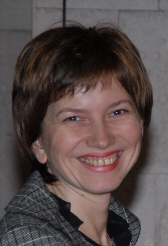TYPOLOGY OF BUILDINGS FOR DAIRY COWS IN BOSNIA AND HERZEGOVINA
Аннотация
Ключевые слова
Полный текст:
 >PDF (English)
>PDF (English)
Литература
Bakken A.K., Daugstad K., Johansen A., Hjelkrem A.G. R., Fystro G., Strømman A.H., Korsaeth A., 2017. „Environmental impacts along intensity gradients in Norwegian dairy production as evaluated by life cycle assessments,“ Agricultural Systems 158(C), 50-60. DOI: 10.1016/j.agsy.2017.09.001
Barkema H.W., Von Keyserlingk M.A.G., Kastelic J.P., Lam T.J.G.M., Luby C., Roy J.P., Kastelic & Kelton D.F., 2015. Invited review: Changes in the dairy industry affecting dairy cattle health and welfare. Journal of Dairy Science 98(11), 7426-7445. https://doi.org/10.3168/jds.2015-9377
Bignal E.M., McCracken D.I., 1996. Low-intensity farming systems in the conservation of the countryside. Journal of Applied Ecology 33(3), 413-424. DOI: 10.2307/2404973
Bijttebier J., Hamerlinck J., Moakes S., Scollan N., Van Meensel J., Lauwers L., 2017. Low-input dairy farming in Europe: exploring a context-specific notion. Agricultural Systems 156, 43–51. http://dx.doi.org/10.1016/j.agsy.2017.05.016
Blanco-Penedo I., Sjöström K., Jones P., Krieger M., Duval J., Soest F., Sundrum A., Emanuelson U., 2019. Structural characteristics of organic dairy farms in four European countries and their association with the implementation of animal health plans. Agricultural Systems, 173, 244-253. https://doi.org/10.1016/j.agsy.2019.03.008
Borusiewicz A., Mazur K., 2017. Environmental and economic conditioning of the breeding of dairy cattle. Fresenius Environmental Bulletin 26(10), 5824-5832.
Dahl G.E., Petitclerc D., 2003. Management of photoperiod in the dairy herd for improved production and health. Journal of Animal Science 81(3), 11–17. DOI: 10.2527/2003.81suppl_311x
Erbez M., Važić B., Rogić B., Bøe K.E., Ruud L.E., 2018. Cow cleanliness in dairy herds with tie stall systems in Bosnia and Herzegovina. Acta agriculturae Slovenica 112(1), 11-17. DOI: 10.14720/aas.2018.112.1.2
Erbez M., Važić B., Boe K.E., Ruud L.E., 2016. Indoor climatic status during winter conditions in dairy herds in Bosnia and Herzegovina. Acta argiculturae Slovenica, 108/2, 121-125. doi:10.14720/aas.2016.108.2.6
Espinoza O.S., Oba M., 2017. Interaction effect of photoperiod management and dietary grain allocation on productivity of lactating dairy cows. Canadian journal of animal science 97(3), 517-525. https://doi.org/10.1139/cjas-2016-0234
FAO, Regional office for Europe and Central Asia. 2012. The meat and dairy sector in Bosnia and Herzegovina. Preparation of IPARD sector analyses in Bosnia and Herzegovina (Contract number 2010/256–560). Rome, Italy: FAO.
Galloway, C., Conradie, B., Prozesky, H., Esler, K., 2018. Opportunities to improve sustainability on commercial pasture-based dairy farms by assessing environmental impact. Agricultural Systems, 166, 1-9. https://doi.org/10.1016/j.agsy.2018.07.008
Glavić M., Zenunović A., Budiša A., 2017. The Production, Purchase and Processing of Milk in Bosnia and Herzegovina. Agro-knowledge Journal 18(3), 187–198. DOI: 10.7251/AGREN1703187G
Jovović V., Rogić B., Važić B., Bøe K.E., Ruud L.E., Erbez M., 2014. Examination of certain parameters affecting dairy cows’ welfare in Bosnia and Herzegovina. In D. Kovačević (Ed.) Book of proceedings: Fifth International Scientific Agricultural Symposium „Agrosym 2014“ (pp. 854–858). Available Online: http://www.agrosym.rs.ba/agrosym/agrosym_2014/documents/PROCEEDINGS_2014.pdf
Lacombe C., Couix N., Hazard L., 2018. Designing agroecological farming systems with farmers: A review. Agricultural Systems, 165, 208-220. https://doi.org/10.1016/j.agsy.2018.06.014
Landais E., 1998. Modelling farm diversity: new approaches to typology building in France. Agricultural systems, 58(4), 505-527. https://doi.org/10.1016/S0308-521X(98)00065-1
Mądry W., Roszkowska-Mądra B., Gozdowski D., & Hryniewski, R. (2016). Some aspects of the concept, methodology and application of farming system typology. Electronic Journal of Polish Agricultural Universities, 19(1). Available Online: http://www.ejpau.media.pl/volume19/issue1/art-12.html
Marco J.L., Cuesta T.S., Resch C.J., Álvarez C.J., 2008. Analysis of layout design models using a multi-criteria function: dairy housing in Galicia (NW Spain). Transactions of the ASABE 51(6), 2105-2111. American Society of Agricultural and Biological Engineers. ISSN 0001-2351.
Mazur K., Barwicki J., Majchrzak M., Borek K.,Wardal W.J., 2015. Economic analysis of non-litter cattle barns. Agricultural Engineering 19(1(153)), 95-106. DOI: http://dx.medra.org/10.14654/ir.2015.153.110
Mokrzecka M., 2018. Influence of building shape and orientation on heating demand: simulations for student dormitories in temperate climate conditions. E3S Web of Conferences 44, 00117, EKO-DOK 2018. https://doi.org/10.1051/e3sconf/20184400117
Næss G., Stokstad G., 2011. Dairy barn layout and construction: Effects on initial building costs. Biosystems engineering 109(3), 196-202. DOI: 10.1016/j.biosystemseng.2011.03.005
Schiavon S., Sturaro E., Tagliapietra F., Ramanzin M., Bittante G., 2019. Nitrogen and phosphorus excretion on mountain farms of different dairy systems. Agricultural Systems, 168(C), 36-47. https://doi.org/10.1016/j.agsy.2018.10.006
Simensen E., Østerås O., Bøe K.E., Kielland C., Ruud L.E., Næss, G., 2010. Housing system and herd size interactions in Norwegian dairy herds; associations with performance and disease incidence. Acta Vetarinaria Scandinavica 52, 14. doi:10.1186/1751-0147-52-14
Trkulja T., Erbez M., 2018. Improving design of dairy cows housing in Bosnia and Herzegovina“. In: Proceedings of scientific conference with international participation Contemporary theory and practice in construction XIII, 510-524. DOI: 10.7251/STP1813510T; ISSN 2566-4484
Tuhus-Dubrow D., Krarti M., 2010. Genetic-algorithm based approach to optimize building envelope design for residential buildings. Building and environment, 45(7), 1574-1581. https://doi.org/10.1016/j.buildenv.2010.01.005
Važić B., Batinić V., Savić N., Erbez M., 2015. Characteristics of indoor microclimate status in goat barns in Bosnia and Herzegovina. Special Issue - Livestock Housing Conference, Journal of Animal Science of Bosnia and Herzegovina, 43-49. DOI: 10.7251/JAS1502043V
Zabbini E., Grandi S., Dallari F., 2007. Relative Remote Rural Areas (RRRA) in developed regions: An analysis of the Emilia-Romagna Region to support policy decision making. 1 – 29. MPRA Paper No. 4661, University Library of Munich, Germany. Available Online: http://mpra.ub.uni-muenchen.de/4661/
Wolfert S., Ge L., Verdouw C., Bogaardt M.J., 2017. Big Data in Smart Farming – A review. Agricultural Systems 153, 69–80. https://doi.org/10.1016/j.agsy.2017.01.023
DOI: https://doi.org/10.12731/2658-6649-2020-12-1-34-47
Ссылки
- На текущий момент ссылки отсутствуют.
(c) 2020 Trkulja Tanja, Erbez Miljan

Это произведение доступно по лицензии Creative Commons «Attribution-NonCommercial-NoDerivatives» («Атрибуция — Некоммерческое использование — Без производных произведений») 4.0 Всемирная.
ISSN 2658-6649 (print)
ISSN 2658-6657 (online)






